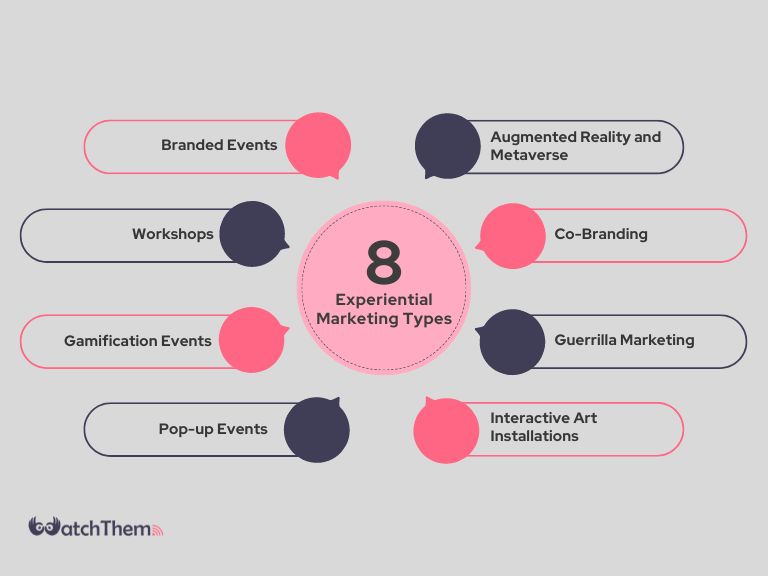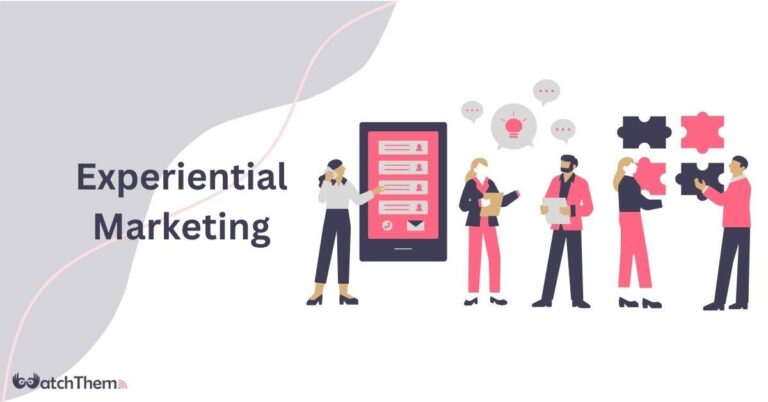Page Contents
One of the most important subjects in the marketing world is the experience that customers have with your service or product. Therefore, one of the well-known areas of marketing is experiential marketing.
This experience can be digital customer experience or other forms of customer interaction. However, what is the experiential marketing definition? Where and in which scenarios can you use it for your benefit? What are the experiential marketing examples? And finally, what are the different types of experiential marketing?
If you have any of these questions in mind, you are in the right place. My name is Cyrus, a serial entrepenure and you can always reach out to me here on my link in bio. In this article, our main goal is to cover important information on this topic and give you a reference to look at any time. So, let us start our journey together.
What Is Experiential Marketing?
Experiential marketing is a process for brands to connect with customers through experiences. The main goal of experiential marketing is to engage customers directly through memorable and imaginative experiences. It may sound like normal and conventional conferences. However, it is much more than that. Its goal is to be more interactive and meet all the customer experience metrics.
This kind of marketing can contain live events or just consist of temporary installations that are only present for a few hours. Experiential marketing, in whatever form, has been shown to increase return on investment and is an essential tactic for marketing executives.
The majority of these marketing events take place in physical spaces, but as technology is moving forward, marketers started mixing online components into their campaigns.
What Are the Types of Experiential Marketing?
Experiential marketing may be used in a variety of ways; the one that works best for you will depend on your business type. Here are a few typical applications for experiential marketing companies that event planners might use:


1. Branded Events
These events serve to reinforce a brand’s image, values, and messaging by reflecting it. For instance, an open mic night may be held at a music establishment where upcoming performers could play. It puts event organizers in a position to interact with the community and promotes them as a place that helps up-and-coming performers.
2. Workshops
Workshops are interactive sessions that provide participants with practical education. They can concentrate on anything from instructional sessions to skill development. A good example would be an arts company holding a painting class where participants pick up watercolor painting techniques. Therefore, it is marketing alongside having fun. This is the core aspect of this type of marketing and all experiential marketing agencies are considering this fact in their plans.
3. Gamification Events
Events involving gamification use elements of games into experiences. A perfect example would be a fitness company. Imagine they are hosting a 5K race and scavenger hunt where competitors compete for prizes and use an app to track their progress. In this experiential marketing, the competitors will be engaged with the company’s products and the culture of the company.
4. Pop-up Events
An event that is temporary and appears somewhere other than its normal place is called a pop-up event. An event planner who teaches cooking classes, for instance, might organize a cuisine pop-up at a well-known restaurant that has many customers. Visitors can sample the meal, pick up cooking tips, and discover more about signing up for real cooking classes.
This is where deep customer knowledge comes in handy and can help in deciding where and when to hold these events. Therefore, an experiential marketing agency that wants to compete in this area must use tools to gather data from customers and plan these events correctly.
5. Interactive Art Installations
An immersive experience that blends technology and art is called an interactive art installation. These kinds of events usually invite viewers to engage in hands-on interaction with the artwork. For example, a virtual reality art piece may be built up at a jazz festival, allowing visitors to pretend to be jazz players.
6. Guerrilla Marketing
Guerilla marketing is some surprise events in the local areas. These events are intended to use unusual methods to attract attendees and grab their attention. People are prompted to interact with a product or service by guerrilla marketing, which piques their interest and surprises them.
This strategy works well if the marketing campaign provides rewards, challenges, or some other incentive to those who take part. Even while these events appear to be spontaneous, developing a successful guerrilla marketing campaign that advances your objectives requires real work.
7. Co-Branding
This type of experiential marketing focuses on the collaboration of two or more brands with each other in a way that all of them benefit from shared resources. One of the most famous examples of this type of branding is the GuitarGuitar collaboration.
The biggest guitar shop in the UK, GuitarGuitar, offers soundproof booths so that customers may feel and test out guitars.
Clients can play the guitar loudly enough because other customers won’t hear them if they plug it into an amplifier and shut the door. This is where the two Guitar shops and soundproof booths businesses can collaborate and have an impact on the market.
8. Augmented Reality and Metaverse
In order to create interactive experiences that immerse viewers in a virtual world, augmented reality (AR) overlays digital information onto real-world surroundings, such as actual objects or places in space.
This is a great opportunity for businesses that work with clothing or house furniture. Since they can use this technology to give their customers a real experience of the product before they buy it or try it in person.
How to Organize an Experiential Marketing Campaign?
If you are working for experiential marketing agencies or you are doing some research for your own business and want to know how to plan an experiential marketing campaign, this is the place for you. We are going through some aspects of the marketing that you need to consider while planning:
1. Customer Base
It’s crucial to know deeply about your current customer data to determine what form of experiential marketing will be most effective before starting any planning. You might even learn something about new markets from this study. To identify the clients who interact with your business the most, think about segmenting your consumer base by using an audience segmentation guide. This way you have options for your plan based on each segment.
2. Identify Your Goals
What are your goals for this campaign? Obtaining new clients? advertising for a specific product? entering a brand-new market? You can begin preparing your campaign once you have determined what your final objective is. Your plan ought to be quantifiable and focused on your target audience.
At this point, defining your brand is also crucial. Recognize the specific message you want to send about the culture and principles of your brand through this event.
3. Plan for a Budget
A marketing budget is required while organizing any new campaign in order to guarantee your return on investment, or ROI. This is particularly true for experiential marketing, which works with standard marketing techniques but also frequently has additional elements that make the costs even higher.
4. Cross-channeled Marketing
Your experiential marketing may be displayed in a physical space, depending on your objectives. Just remember that there are multiple ways to engage in this form of marketing. It is also possible to publicize, livestream, and tag your experience on social media.
You can divide up your audience into groups to target potential customers who could be in the region while also providing opportunities for out-of-area customers to interact with your company via social media, text messaging, or email marketing.
Conclusion
We are in an era where everyone is getting and seeing lots and lots of ads every day and hour. You as a business owner or someone who is working in the marketing area must be aware of it. You must make ads and experiences that stand out in this sea of advertisements. This is where experiential marketing shines. By using this method, you can distinguish yourself from other businesses and raise your revenue easily.
FAQs
Experiential marketing is a vast area that can be explained for a long time and still, some things miss out. Here are some questions that we think are worth their special answers:
1. What Is an Example of an Experiential Product?
A film, a concert, a balloon flight, a night in a hotel, a restaurant meal, or a museum visit are all experiential products that can be used in your experiential marketing campaign.
2. What is The Biggest Problem With Experiential Marketing?
Developing genuinely memorable experiences that connect with clients is one of the toughest parts of experiential marketing. It might be challenging to come up with unique and imaginative concepts that stand out in a crowded market.

